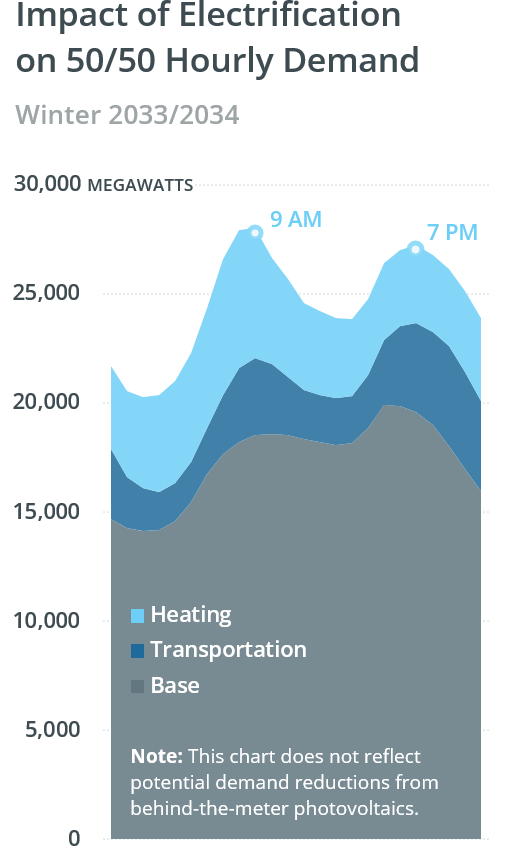CELT 2024: Heating electrification will drive higher energy use, winter peaks

Heat pumps for space and water heating are gaining market share in New England as state policies drive decarbonization of the economy. As a result, ISO New England projects a dramatic increase in both overall electricity use and winter peak demand over the next 10 years.
ISO New England anticipates that by 2050, heating for more than 4.4 million housing units (69% of the region’s housing stock) and more than 2.7 billion square feet of commercial space (54% of the region’s total) will become electrified. Also, according to the ISO’s Heating Electrification Forecast, water heating for almost 3.6 million homes and 1 billion square feet of commercial space will become electrified.
The projections are part of the annual Forecast Report of Capacity, Energy, Loads, and Transmission (CELT Report)—a key planning document that aims to size up the region’s energy landscape for the next 10 years. The ISO continually refines its forecast methods. For instance, ISO forecasters this year updated their approach to partial heating applications, where heat pumps coexist with but do not replace traditional fossil fuel heating systems.
In general, most housing and businesses in the region use natural gas or oil heating systems. However, the ISO expects heat pumps to be a cornerstone of ongoing building decarbonization efforts in all New England states. An increasing portion of state-sponsored energy efficiency budgets are targeting heat pump installations across the region. For example, in Maine, heat pumps have become more common following a concerted education effort and rebate program.
The ISO predicts peak energy demand of 20,308 megawatts (MW) for the coming winter, assuming typical seasonal peak temperatures (referred to as the 50/50 peak forecast). Only about 1% of that peak will be attributable to electricity used for heating. Throughout 2024, heating is expected to account for only half a percent of the region’s net energy consumption, or 640 gigawatt-hours (GWh).
But by 2033, ISO forecasters believe, heating will represent 13% of a 26,768 MW winter peak (under typical conditions) and will make up 6% of total annual energy use.

For decades, New England has had a summer-peaking power system, where the greatest energy use occurs on the hottest and most humid days, due to widespread use of air conditioning. By the mid-2030s, however, electrification of the heating sector likely will result in a winter peak that’s higher than the summer peak. This shift could occur sooner if the region experiences an especially cold winter.
Heating electrification may also introduce another new phenomenon—a morning peak. Historically, winter demand for electricity has been highest in the late afternoon and early evening, as people return home from work. But in future winters, new electricity uses such as electrified commercial space heating, which uses the most heating energy between the hours of 8 and 10 a.m., will contribute to overall higher demand in the morning.
The chart above reflects potential regional energy use on a peak demand day in January 2034. Energy used for heating leads to a morning peak more than 700 MW higher than the evening peak. The chart does not account for potential demand reductions resulting from behind-the-meter photovoltaics, meaning it most closely resembles a cloudy day or a day when solar panels are covered by snow. On a sunny day without snow cover, the morning and evening peaks likely would not change, but the level of demand between the peaks could drop significantly.
Learn more about the 2024 CELT Report
- Categories
- Recent Publications & Events
- Tags
- celt, electrification, forecast, winter



